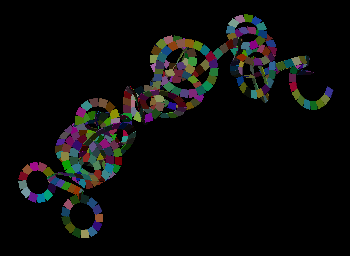Table of Contents
Growth grammars are a rule-based approach to the modelling of dynamic systems. In contrast to conventional imperative programming languages, rule-based approaches provide a natural and concise way of modelling: Most systems to be modelled behave according to a set of rules, and our perception works this way and not imperatively using a list of operations which have to be processed step by step.
Relational growths grammars (RGG) are defined as a unification of L-systems and graph grammars, which follow the rule-based paradigm and were developed during the last decades. This tutorial gives an introduction into RGGs and how to implement them within the modelling platform GroIMP. Using these techniques, the following snapshots have been created:
 A model of barley. |
 Game Of Life. |
 A looped ladder. |
 A tree, based on the pipe model. |